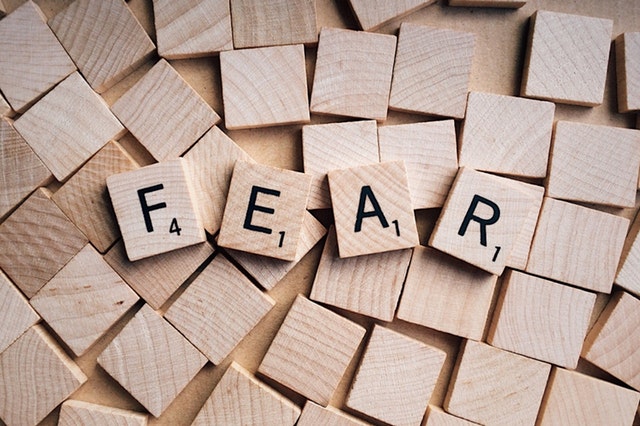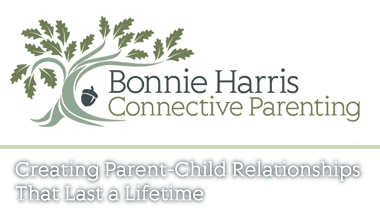
What happens to you when your child behaves less than perfectly? When he ignores you or she screams, “I don’t have to listen to you.” Some of you can respond effectively by changing your behavior and addressing whatever the situation is from a different or calmer place, with a different attitude, tone or posture. But probably many of you get your button pushed, think your child is out to get you and yell back behaving just the way you don’t want your child to behave.
The difference is the parent who takes it personally and the parent who doesn’t. So what makes the difference?
When I’m working with parents on this, I often describe the cartoon in my book “When Your Kids Push Your Buttons” on p.86. The mother is trying her hardest to deflect those oncoming critical remarks with a shield, but the onslaught catches her off guard, and she doesn’t get her shield up in time, so the remarks hit her hard. This perfectly illustrates taking it personally. Once those remarks, attitudes, behaviors are allowed to get past your shield (your boundary), it’s next to impossible to respond neutrally and effectively.
How do you suddenly stop allowing your children’s words and behaviors to penetrate?
The answer is to understand it’s not your problem.
The anger, upset, frustration that comes from your child is his problem. It is not your job to fix his problem; it is your job to simply understand that he is having a problem, not being a problem.

When you take your child’s behavior personally and react, it means you are buying into your child’s accusation, ignoring, or criticism by believing it—at least somewhat. You are making their problem your own. When your child screams, “You’re not the boss of me” and you react in anger, your child’s words are likely tapping into an old memory of being bossed around by the adult’s in your life causing you to feel powerless. That feeling of powerlessness gets prodded and you react.
When that shield fails to protect, we are most likely feeling fear of some kind. Next time your button is pushed, see if you can identify the fear that is triggered. Make a quick note of it so you will remember the important aspects later on when you have time to think.

Most of our buttons are about fear—fear for our child or fear for ourselves. Is my child going to be alright? Am I going to be able to do the best for him? And many of our reactions are attempts to deflect that fear. We yell at our children and punish them to try to get them to behave in a way that doesn’t upset us, that doesn’t provoke that fear. We don’t want to feel that fear, and so we put the blame on them for making us feel it. But our fear is not their problem.
Allow your fears, don’t try to squelch them by making your children behave the way you want just to make your life easier. They need to learn for their own sake, not yours. Be with your fears and doubts. They are a part of parenting, they come with the territory. We fear for the safety and happiness of our children. We fear for our competency. But controlling our children to keep that fear at bay is not the answer. Find out what your fears and doubts are telling you, what you can learn from them. In order to learn, it’s necessary to have a certain amount of objectivity about your fears—to see them and know what they are rather than to be immersed in them. It’s okay to have them. It doesn’t mean you are a bad parent. When you can accept your fears and doubts, you will be less defensive.
When you understand that you don’t have to come up with an answer each time a new dilemma appears or fix whatever problem your child is having or make your child respond calmly and politely, you are protecting yourself from taking it personally. So, a “You’re stupid” may initially hurt your feelings, but you won’t need to scream at your child or decide you have to enforce strict punishment to insure she will never say it again. When your shield (your boundary that keeps clear whose problem is whose) protects you from taking the remark personally, you’re more able to respond with something like, “I know you don’t like what I’ve told you—I don’t expect you to. But it doesn’t mean that I’m stupid. And it doesn’t mean you’re stupid if you say something I don’t like.”

When you don’t take your children’s behavior personally, you can use each occurrence as a teachable moment. In fact, you will relish in the opportunity of the problem when you are more neutral because you can actually help with your validation. “I completely get that you don’t want to go to school today. We all have days when we just want to stay home cozy in pajamas. Let’s talk about what we will do after school today as you’re getting dressed. Maybe we could….”
Remember, you don’t have to have the correct answer in order to respond from a place of integrity and compassion. Stay present, put your fears aside for the moment, and think what your child needs to hear from you in order to be open to actually learn a lesson.

We punish our children in an attempt to keep them from pushing our buttons, often escalating the original problem into a cycle of anger and blame. When Your Kids Push Your Buttons is not about what to do to your kids to get them to stop pushing your buttons. This book is about how to be the parent you wish you could be-the parent that only you are holding yourself back from.
Related articles







